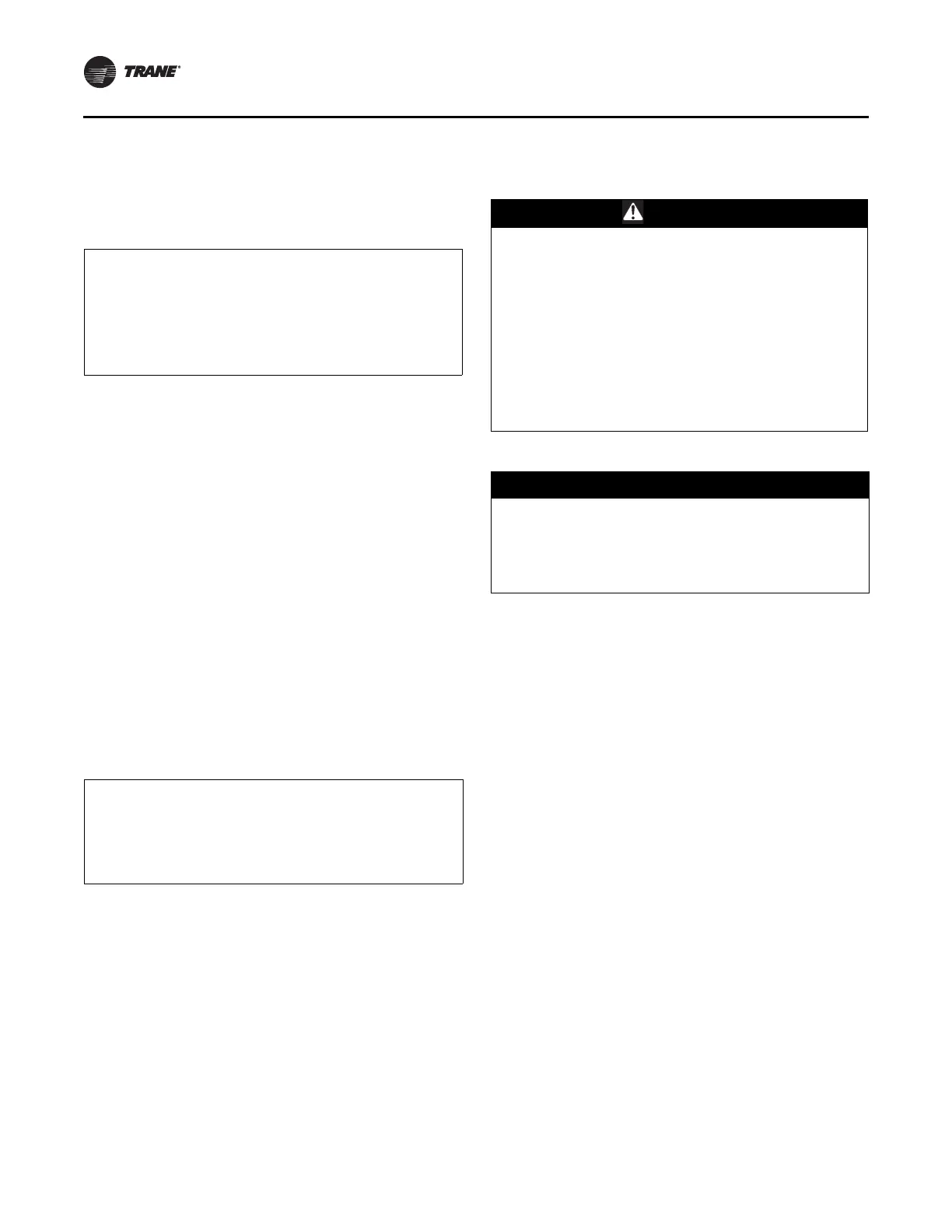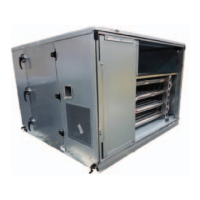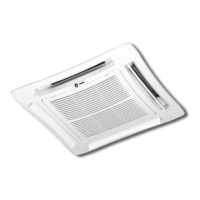Start-Up
140 CLCH-SVX07K-EN
When a single transmitter is supplied in a multiple fan
system, one or more fans will be brought back to the
transmitter as a manifold and the airflow will represent the
total airflow for the system. As a result, the factor should
be adjusted as follows:
*
If a fan fails in a multiple fan system where only one
transmitter is being supplied, and if the remaining fans will
continue to be used, the factor should be reduced
accordingly. Additionally, if the inactive fan was included
in the manifold back to the transmitter, the tubes from the
inactive fan should be temporarily removed and replaced
with tubes from an active fan (or simply plugged).
When a transmitter is supplied for each fan, the factor does
not need to be adjusted. The resulting airflow will
represent single-fan airflow. At the controller level, the
individual airflows should be summed to get the total
airflow. If a field-provided K-factor is to be used (see
below), the measured airflow for the system should be
divided by the number of active fans to get a single-fan
K-factor.
Field-obtained factors can provide maximum accuracy. To
obtain the factor in the field, measure the differential
pressure output from the transmitter while measuring the
airflow through the system. Once these two values have
been measured, simply solve for K using the following
equation:
CDQ Wheel Start Up
Note: Do not exceed the maximum rated airflow for the
wheel. The pressure drop across the wheel is not to
exceed 1.5 inches w.g.
1. Set diameter seals. See “CDQ Seal Adjustment,”
p. 154.
2. Turn the wheel counter-clockwise (as viewed from the
pulley side) by hand to verify that the wheel turns
freely through its full rotation.
3. With hands and objects away from moving parts,
activate the wheel and confirm the wheel rotation. The
correct rotation direction is counter-clockwise as
viewed from the pulley side.
4. Verify rotational speed 8-10 rotations per hour. The
wheel should be a 1/4 turn in 100-150 seconds.
5. Start and stop the wheel several times to confirm seal
adjustment and proper belt tracking on the wheel rim.
6. If the wheel has difficulty starting, confirm seals
adjustment and belt tension. See “CDQ Seal
Adjustment,” p. 154. If belt slips, see “CDQ Drive Belt
Adjustment/Replacement,” p. 153.
7. If the wheel has difficulty starting, turn off the power
and inspect for excessive interference between the
wheel surface and the four diameter seals. To correct,
loosen the diameter seal adjusting screws and back the
diameter seals away from the surface of the wheel.
Apply power to confirm that the wheel rotates freely.
Readjust and tighten the seals according to
instructions in “CDQ Seal Adjustment,” p. 154.
K = N * K-Factor from Table 51
Where:
K = The final factor to be used for controller
programming.
N = The number of active
*
fans in the system.
K = ACFM/SQRT(DP)
Where:
K = Field-provided constant factor.
ACFM = Actual airflow (ft
3
/min.) being measured at the air density
being measured.
DP = Differential pressure (inches w.g.) being measured by the
transmitter.
WARNING
Hazardous Voltage w/Capacitors!
Failure to disconnect power and discharge capacitors
before servicing could result in death or serious injury.
Disconnect all electric power, including remote
disconnects and discharge all motor start/run
capacitors before servicing. Follow proper lockout/
tagout procedures to ensure the power cannot be
inadvertently energized. Verify with an appropriate
voltmeter that all capacitors have discharged.
For additional information regarding the safe discharge
of capacitors, see PROD-SVB06*-EN
NOTICE
Equipment Damage!
Exceeding the recommended airflow can result in
damage to equipment. Trane is not responsible for
equipment damage resulting from exceeding
recommendations.
